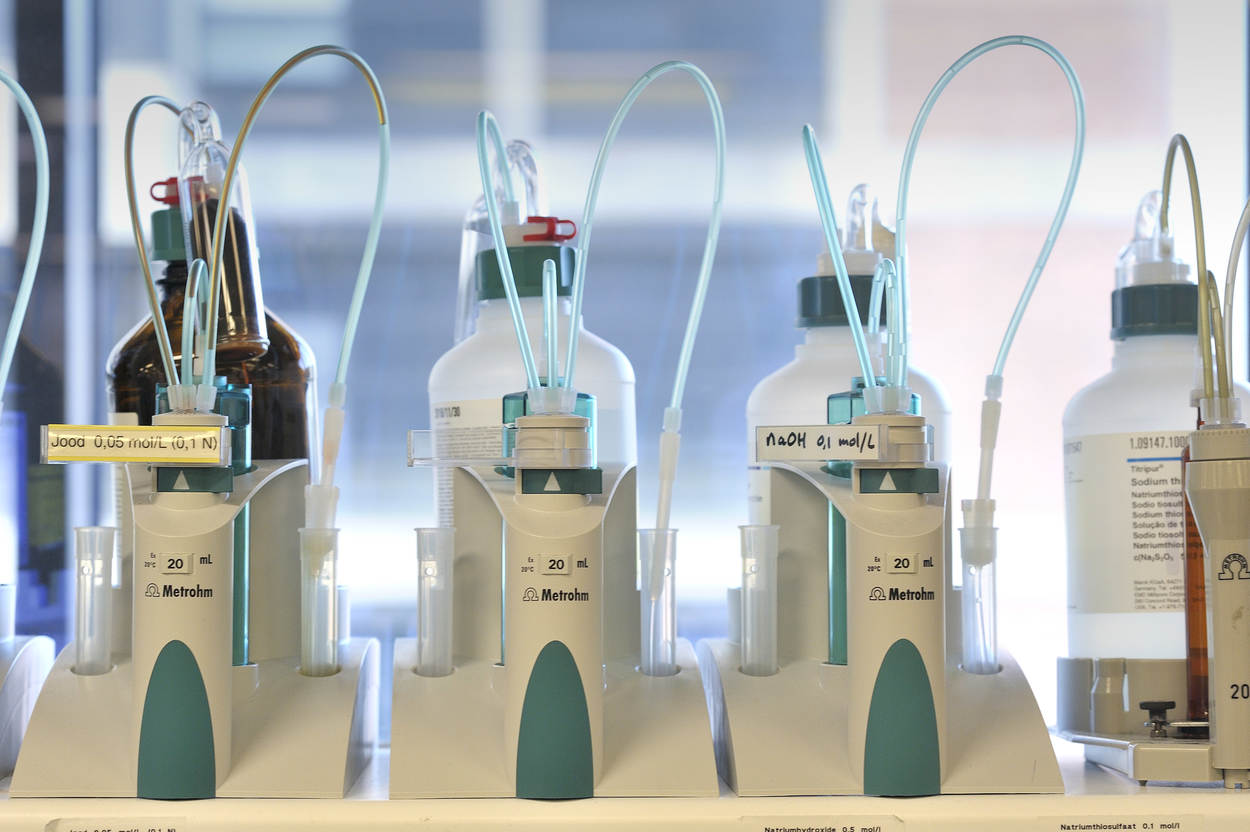
Erik's publication can be found here:
Erik Kemper: Analysing cord blood levels of TNF inhibitors to validate the EULAR points to consider for TNF inhibitor use during pregnancy
Project of Erik Kemper, Master Science & Business Management student of Utrecht University. Erik Kemper did his research internship at the Medicines Evaluation Board (MEB) from October 2020 to June 2021. His supervisors were Nafise Ghalandari (MEB), Ineke Crijns (MEB), Jeroen Smeele (Erasmus MC) and Radboud Dolhain (Erasmus MC).
In June, I completed my nine-month internship at the MEB. During the internship, I got to work on a study within the Preconceptional Counselling in Active Rheumatoid Arthritis (PreCARA) cohort in collaboration with the Erasmus Medical Centre. PreCARA is a nation-wide prospective cohort study on rheumatic diseases and pregnancy. The aim of the study I worked on was to validate the rheumatology guidelines for the stop time point of Tumour necrosis factor inhibitors (TNFi) during pregnancy.
Background
TNFi have become an important component of the treatment of rheumatic diseases during pregnancy. A drawback of prescribing TNFi during pregnancy is active transport of these drugs across the placenta. Placental transfer starts around gestational week 20, and the rate of transfer increases throughout pregnancy. It is mediated by foetal Fc receptor and is dependent on the structure of the TNFi.
The European League Against Rheumatism (EULAR) created points to consider for the use of TNFi during pregnancy. These points to consider recommend discontinuation of treatment at gestational age (GA) 20 weeks for adalimumab and infliximab, GA 30–32 weeks for etanercept and conditional continuation of certolizumab pegol throughout pregnancy. Until now, it is unknown whether stopping treatment at the advised GA results in the absence of TNFi in cord blood
Methods
To validate the EULAR points to consider, data on patients from the PreCARA cohort who were treated with TNFi was used. TNFi were discontinued at the recommended stop time points. At birth, cord blood was collected and subsequently analysed for the presence of the TNF inhibitor the patient used.
Results
In total, 111 patients were eligible for the current analysis. Because some patients switched from adalimumab, infliximab or etanercept to certolizumab pegol, we had a total of 137 cord blood measurements.
Most patients stopped around the recommended stop time points. Certolizumab pegol (n=68) was stopped at a median gestational age of 37.0 weeks and detectable in 4 cord blood samples (5.9%). These values were 25.0 weeks and 0 cord blood samples (0%) for etanercept (n=30), 19.0 weeks and 12 cord blood samples (48.0%) for adalimumab (n=25) and 18.4 weeks and 8 cord blood samples (57.1%) for infliximab (n=14).
If detectable, the median concentrations in the cord blood were 0.3 µg/ml for certolizumab pegol (1.0% of the median maternal concentration during active use), 0.5 µg/ml for adalimumab (6.2% of the median maternal concentration during active use) and 0.4 for infliximab (1.2% of the median maternal concentration during active use).
Conclusion
Compliance with the EULAR points to consider results in undetectable levels or absence of TNFi in cord blood in most patients that use certolizumab pegol or etanercept. For adalimumab and infliximab, TNFi was detectable in cord blood in about half of the patients. The detected concentrations of TNFi in cord blood were far lower than the maternal levels during active use. The potential harmful effects of these low concentrations of TNFi in cord blood are unknown and require further investigation.

Jasmin Schelhaas: The use of uncontrolled trials for providing comprehensive evidence for medicines approved by the EMA
Project of Jasmin Schelhaas, Master Science and Business Management student of Utrecht University (UU). Her research internship from October 2020 to June 2021 was a collaboration between the division of Pharmacoepidemiology and Clinical Pharmacology of Utrecht University and the Medicines Evaluation Board (MEB). Her supervisors were Lourens Bloem (UU), Paula van Hennik (MEB) and Carla Herberts (MEB).
For nine months, I have been working on my major research project for the master Science and Business Management (UU) at the MEB. During my project I studied the relationship between the use of uncontrolled trial designs and type of European Marketing Authorisation Applications.
Background
As is well-known European Marketing Authorisations (MAs) differ based on the comprehensiveness of clinical trial data. When data are comprehensive at time of MA application (MAA), a standard marketing authorisation (SMA) is granted. When data are not comprehensive, authorisation under exceptional circumstances (AEC) is granted and when data are not yet comprehensive, a conditional marketing authorisation (CMA) is granted. For all MAAs, randomised controlled trials are the golden standard to evaluate clinical efficacy. When uncontrolled trials are used instead, this must be justified. Therefore, the aim of our study was to get insight in the relation between the different types of MAs and the arguments that were used to accept MAAs based on uncontrolled trials.
Methods
To do so, we considered all MAAs approved by the EMA in 1995-2020 and included those that were based on full MAA dossiers (excluding e.g., generics and biosimilars) and uncontrolled pivotal trials. We divided this cohort in three groups of MAs: SMAs, AECs and CMAs. Thereafter, we extracted arguments for the acceptation of uncontrolled trials as the basis for initial MAA approval from European Public Assessment Reports and visualised the results through UpSet plots.
Results
We found that among the 1454 MAs granted in the period 1995-2020, 752 were approved on the basis of a full dossier. Of these, 49/632 SMAs (8%) were based on uncontrolled trials, whereas this was 22/66 AECs (33%) and 28/54 CMAs (52%), resulting in a total of 99 MA approvals based on uncontrolled trials. The five most frequently used arguments to accept these MAs based on uncontrolled trials were the lack of satisfactory treatment (n=28, 28%), rarity of disease (n=16, 16%), severity of disease and effect size of the efficacy endpoint (both n=15, 15%) and/or adherence to a disease-specific guideline (n=14, 14%). However, for 15 SMAs based on uncontrolled trial (31%), no arguments were provided at all. For AECs, the arguments often included rarity of disease (n=11, 50%). For CMAs, arguments often included lack of satisfactory treatment and effect size (both n=10, 36%) and severity of disease (n=6, 21%).
Conclusion
From these results, we can conclude that uncontrolled trials were more often found in MAAs with non-comprehensive data (AECs and CMAs) than in MAAs with comprehensive data (SMAs). In SMAs, however, justification for acceptance of the lack of a control was less clear. This should be improved to increase the understanding of stakeholders on type of MA and factors of comprehensiveness.

Audrey Hermans: Home-brewed vs commercial CDx: What happens in hospital labs?
Project of Audrey Hermans, Master Management, Policy Analysis and Entrepreneurship in Health and Life Sciences student at the VU in Amsterdam. She performed her research internship from February to June 2021 at the Medicines Evaluation Board (MEB). Her supervisors were Marjon Pasmooij (MEB), Marc Maliepaard (MEB) and Wouter Boon (Utrecht University).
Background
From May 26, 2022 the In Vitro Diagnostics Regulation (IVDR) creates the first European regulatory recognition and requirements for assessment of companion diagnostics (CDx). CDx are diagnostic tests for biological samples which identify biological features that mark how patients will respond to treatments. This allows to determine which patients will benefit from those treatments. Two forms of CDx are home-brewed and commercial CDx. Home-brewed CDx are developed and used within laboratories, while commercial CDx are commercially produced and sold to laboratories.
From May 2022, Notified Bodies can consult the MEB on performance and safety of CDx. To assist the MEB in preparing for this new role, this research explored why stakeholders, who apply CDx in Dutch hospitals, use home-brewed or commercial CDx. In this way, insight is provided in motives for using these CDx. This can aid the EMA and national agencies in their assessments of CDx.
Main research question
Why do Dutch hospitals choose to use either commercial or home-brewed assays for biomarkers (CDx)?
Methods
To explore Dutch hospitals’ decision-making on using CDx, Rogers’ theory on adoption of innovation was used. This theory specifies aspects which help to explain why consumers adopt innovations. Rogers’ theory allowed to identify how decisions to use certain CDx are made.
Semi-structured interviews with healthcare professionals in the field of CDx were conducted. Members of seven of the eight Dutch Molecular Tumor Boards were interviewed, as well as eight general hospitals.
Results
Unexpectedly, participants appeared to interpret the term CDx in varying ways. One interpretation views CDx as tests for one specific medicine. A broader interpretation considers CDx as predictive tests, which test for multiple treatments simultaneously. Furthermore, a third type of CDx was found; tweaked tests. These commercially bought tests are adapted by laboratories to fit their needs. This blurs the line between commercial and home-brewed CDx, creating uncertainty regarding the IVDR.
In daily practice, laboratories discover new CDx through contact with pharmaceutical companies, literature, and conferences, which facilitates observability of CDx. After discovering new CDx, clinical demand is first considered. If a new test is indeed needed, laboratories review and compare the options of buying CDx or developing CDx themselves. In this consideration, quality, costs and compatibility are important. If satisfactory, the test is validated. Finally, a test is adopted and implemented. This implementation is complex, as it may require adaptations in the daily practice of laboratories. The IVDR is expected to impact daily practice in Dutch diagnostic laboratories by increasing costs and administrative work and decreasing quality and innovativeness.
Conclusion
The results of this research imply that home-brewed, commercial, and tweaked CDx are used in Dutch hospitals. Decisions to work with home-brewed or commercial CDx are dependent on different factors and different CDx fit better in different situations. Continuous evaluation between policymakers, the MEB and practice helps to stay informed about developments in the field of CDx. In this way, policy and practice can be brought closer together. This can help the MEB in enhancing regulatory preparedness, which is important for improving anticipation capabilities, and to keep up with the pace of innovation. Future quantitative research could test the results of this research for generalisability on a national level. Additionally, bringing together different stakeholder groups to the discuss the IVDR and application of CDx would be useful on a national as well as European level.










